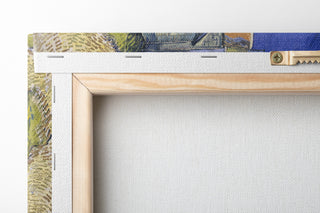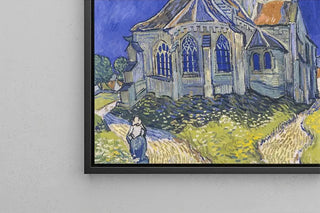The Departure of the Spanish Garrison of Den Bosch after the Capitulation to Frederick Henry in 1629 - Charles Rochussen


Vue de dos

Cadre (en option)
The Departure of the Spanish Garrison from Den Bosch after the Capitulation to Frederick Henry in 1629: a historic moment frozen in time
The art print of The Departure of the Spanish Garrison from Den Bosch after the Capitulation to Frederick Henry in 1629 depicts a moment of tension and resilience. The earthy colors and dark tones evoke an atmosphere of melancholy, while emphasizing the gravity of the situation. The painting technique highlights the expressions of the characters, capturing the sadness and determination of the soldiers leaving the city. Every detail, from the uniforms to the flags, is carefully rendered, allowing the viewer to feel the emotional impact of this historic event. This art print is a true window into the past, inviting reflection on the consequences of war.
Charles Rochussen: the chronicler of conflicts
Charles Rochussen, a Dutch painter of the 19th century, is renowned for his historical works illustrating significant events of his time. Influenced by realism, he brought scenes of battles and conflicts to life with remarkable precision. His career is marked by a commitment to representing key moments in Dutch history, notably the wars of the Republic. The Departure of the Spanish Garrison is an iconic piece that demonstrates his talent for capturing the essence of military events while highlighting human emotions. Rochussen thus contributed to his country’s collective memory through his art.
A decorative piece with multiple virtues
This reproduction of the art print The Departure of the Spanish Garrison from Den Bosch is a decorative piece that will enrich your living space. Whether in a living room, office, or bedroom, it adds historical depth and timeless elegance. The quality of the print ensures fidelity to the details and colors of the original work, offering undeniable aesthetic appeal. By choosing this canvas, you opt for a decoration that sparks interest and reflection, while adding a touch of history to your interior. It is a piece that will captivate your guests and enrich your conversations.

Rendu mat

Vue de dos

Cadre (en option)
The Departure of the Spanish Garrison from Den Bosch after the Capitulation to Frederick Henry in 1629: a historic moment frozen in time
The art print of The Departure of the Spanish Garrison from Den Bosch after the Capitulation to Frederick Henry in 1629 depicts a moment of tension and resilience. The earthy colors and dark tones evoke an atmosphere of melancholy, while emphasizing the gravity of the situation. The painting technique highlights the expressions of the characters, capturing the sadness and determination of the soldiers leaving the city. Every detail, from the uniforms to the flags, is carefully rendered, allowing the viewer to feel the emotional impact of this historic event. This art print is a true window into the past, inviting reflection on the consequences of war.
Charles Rochussen: the chronicler of conflicts
Charles Rochussen, a Dutch painter of the 19th century, is renowned for his historical works illustrating significant events of his time. Influenced by realism, he brought scenes of battles and conflicts to life with remarkable precision. His career is marked by a commitment to representing key moments in Dutch history, notably the wars of the Republic. The Departure of the Spanish Garrison is an iconic piece that demonstrates his talent for capturing the essence of military events while highlighting human emotions. Rochussen thus contributed to his country’s collective memory through his art.
A decorative piece with multiple virtues
This reproduction of the art print The Departure of the Spanish Garrison from Den Bosch is a decorative piece that will enrich your living space. Whether in a living room, office, or bedroom, it adds historical depth and timeless elegance. The quality of the print ensures fidelity to the details and colors of the original work, offering undeniable aesthetic appeal. By choosing this canvas, you opt for a decoration that sparks interest and reflection, while adding a touch of history to your interior. It is a piece that will captivate your guests and enrich your conversations.



